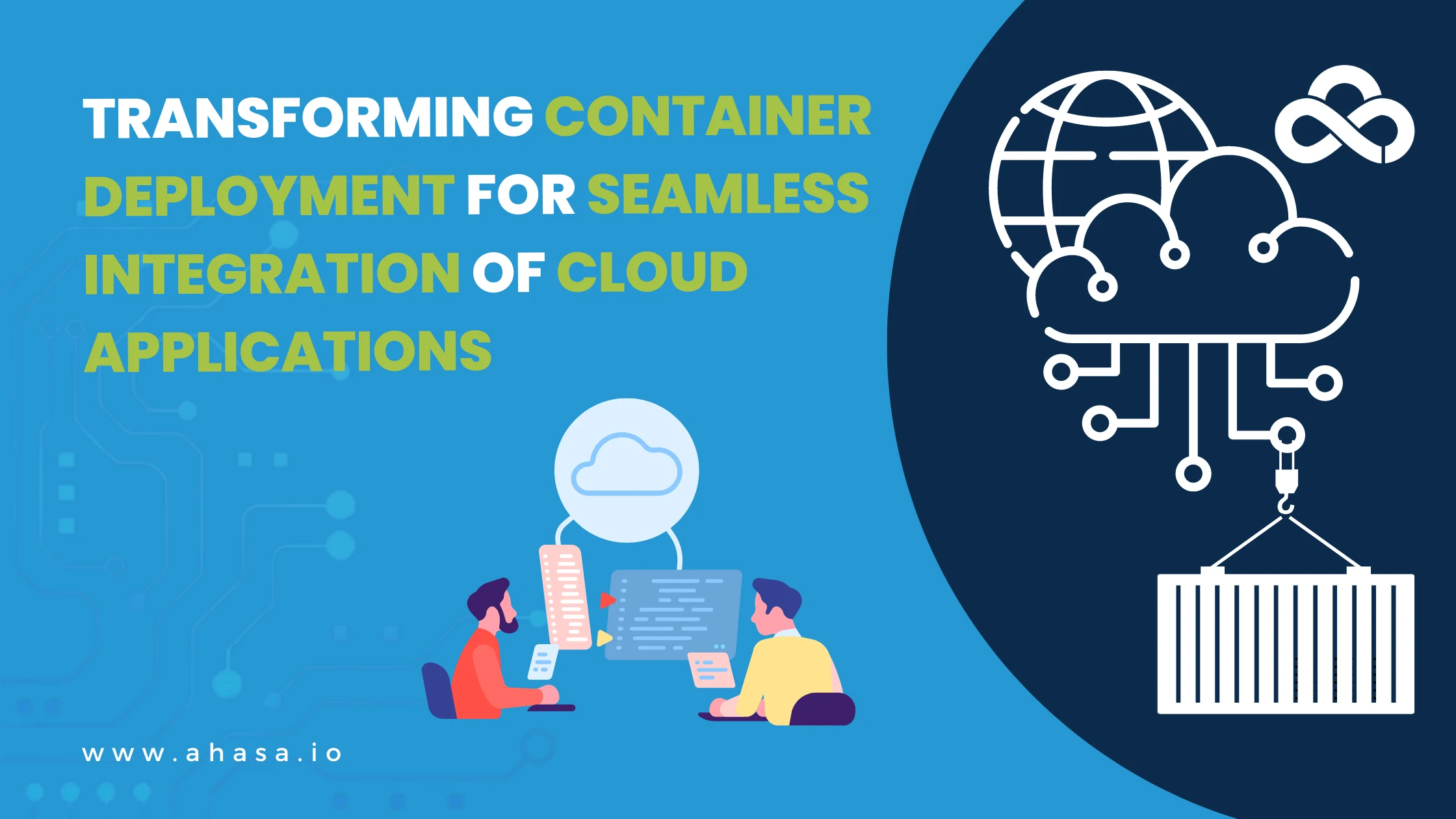Containerized apps have become the best way for companies to speed up their go-to-market plans in a world where technology is changing quickly. But putting containers to work can be a hard and complicated task because it involves a lot of settings, dependencies, and compatibility problems. Also, managing applications on various cloud platforms adds another level of difficulty. In this blog post, we will tell you about Ahasa, the easiest container deployment tool in the world – and show you how it improves the process of integrating containers, makes better use of resources, and makes release across different cloud platforms seamless.
Effortless Container Integration through Low-Code Canvas:

One of the main things that makes Ahasa stand out is its low-code platform, which makes it easy for users to add their container apps. Through the public catalogue, users can find and choose the goods they want, using the templates and connections that have already been set up. Organisations can launch their containerized apps online in just a few clicks. This makes the launch process much simpler and reduces the number of steps. Ahasa lets developers and DevOps teams focus on coming up with new ideas and making apps that work well, instead of being bogged down by complicated release processes.
Seamless Deployment to Any Cloud Platform:

No longer are you stuck with just one cloud service – Ahasa welcomes the multi-cloud era and makes it easy for businesses to deploy their apps across different cloud platforms without any problems. The one-click launch feature of Ahasa makes sure that the switch from a private cloud to a public cloud goes smoothly. Ahasa saves important time and resources by getting rid of the need for human intervention and automating release. This makes application scaling more agile and flexible.
Real-Time Insights for Enhanced Performance:

At the heart of what Ahasa has to offer is a strong tracking system. With its built-in tracking tools, companies can see how applications are running, how resources are being used, and how healthy the system is in real time. DevOps teams can find problems ahead of time and fix them, reducing downtime and making sure containerized apps run smoothly. By keeping an eye on key measures like CPU and memory usage, Ahasa helps businesses make the best use of their resources. This leads to better performance and lower costs.
Ahasa is the best choice for companies that want a tool for deploying containers that is easy to use and works well. Ahasa reduces complexity and speeds up time-to-market by making the connection process easier with its low-code canvas. Businesses get a lot of flexibility and agility from being able to launch applications easily across various cloud platforms. Also, Ahasa’s monitoring features give groups important information that helps them make the best use of their resources and make sure that applications run at their best. Adopting Ahasa will change the way you launch containers and make way for new ideas and growth in the future.
You might also like to read: Ahasa Release 3.7.0: Optimizing Cloud Cluster Management


